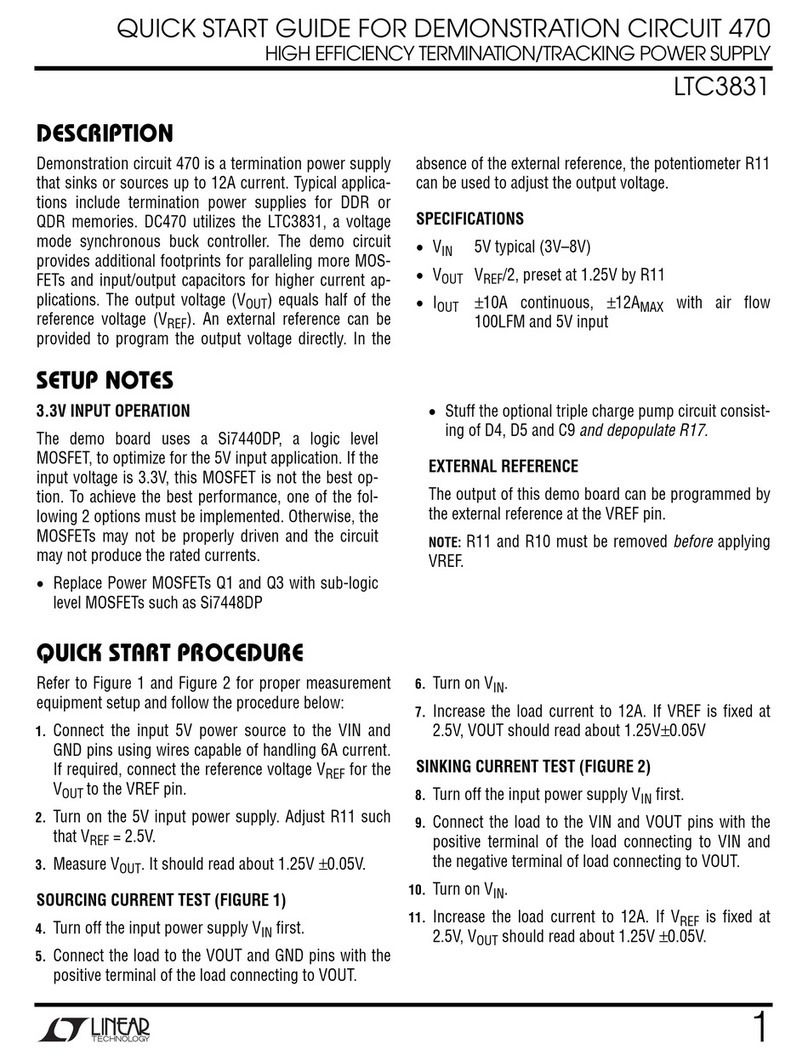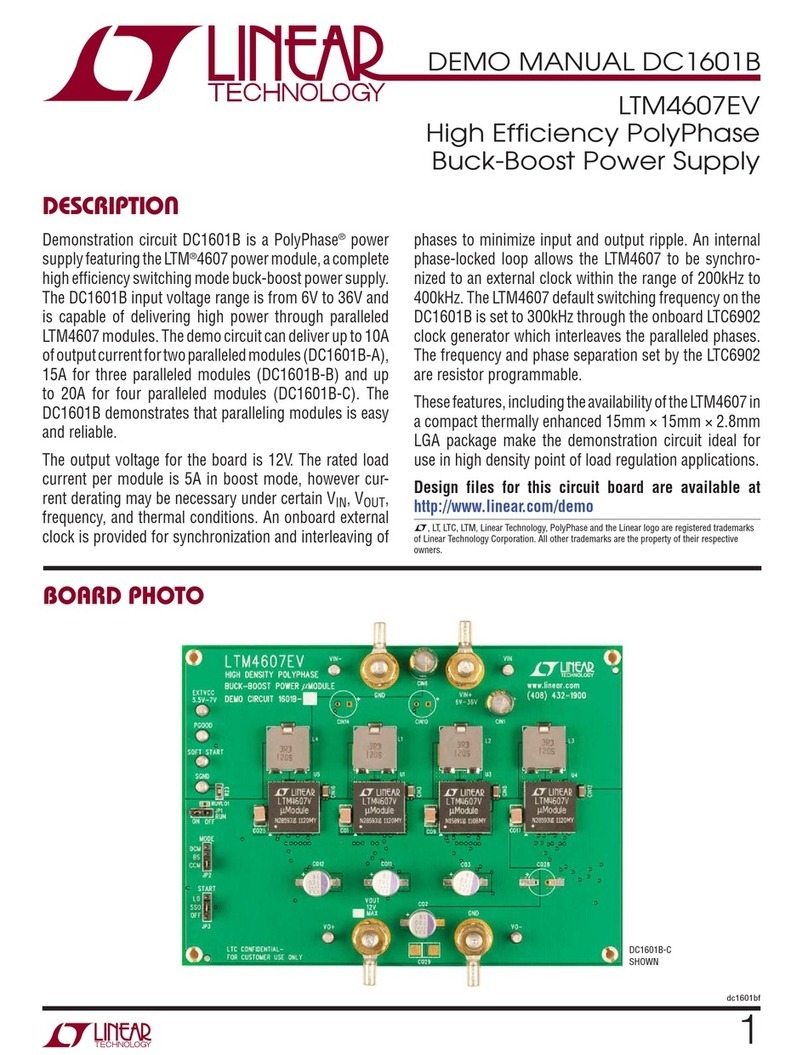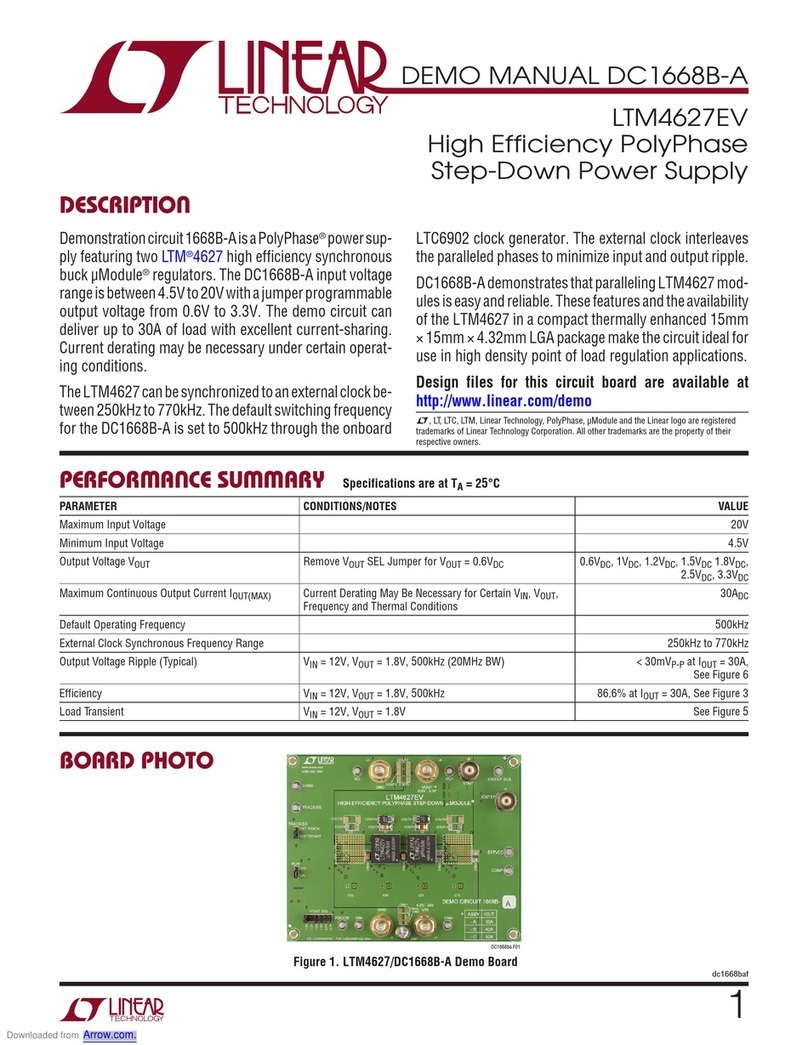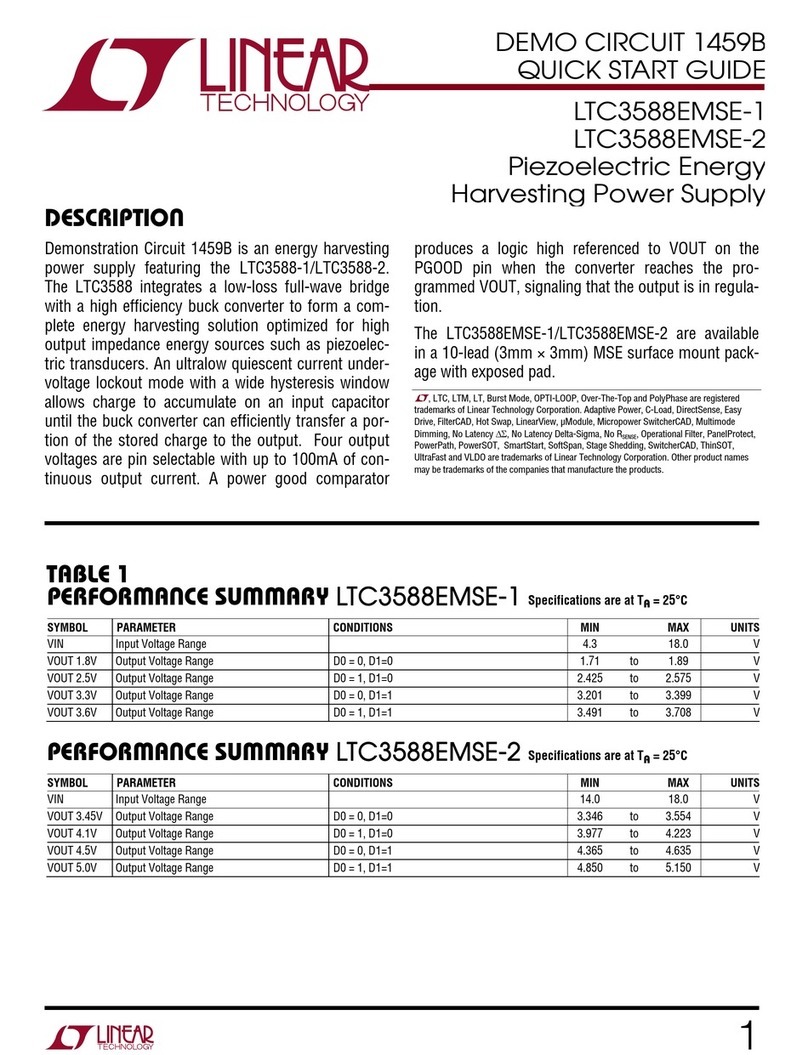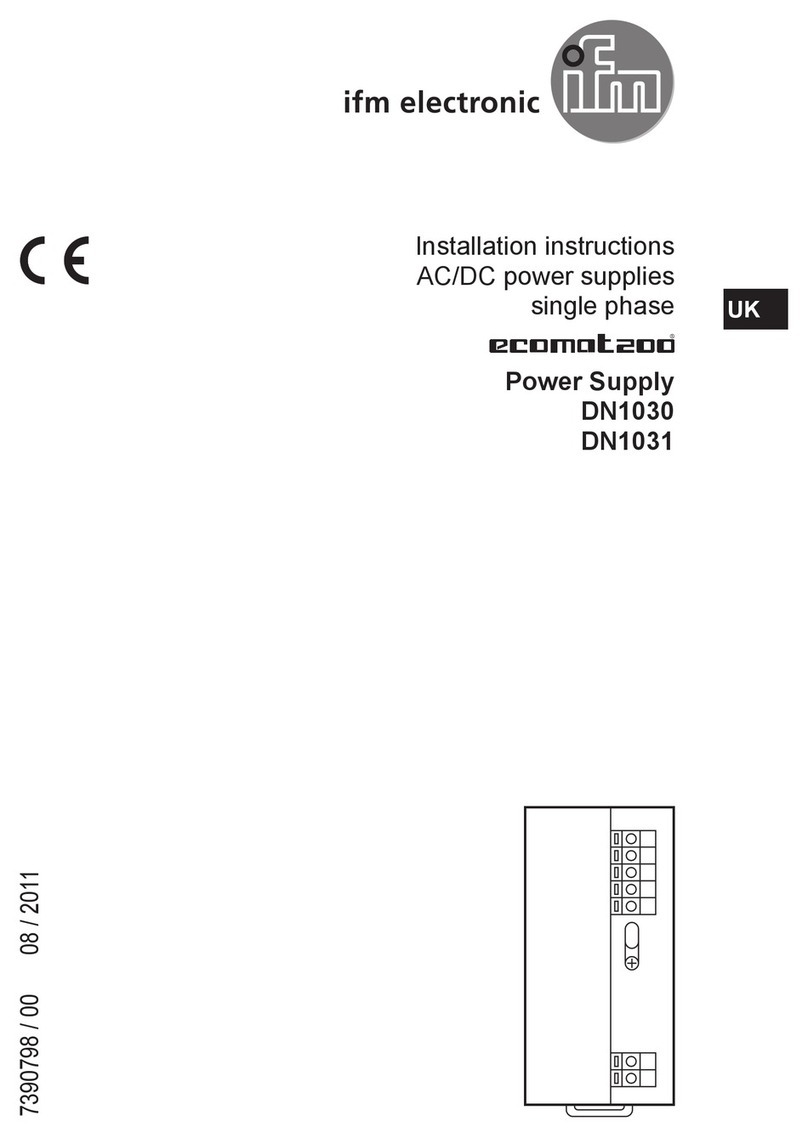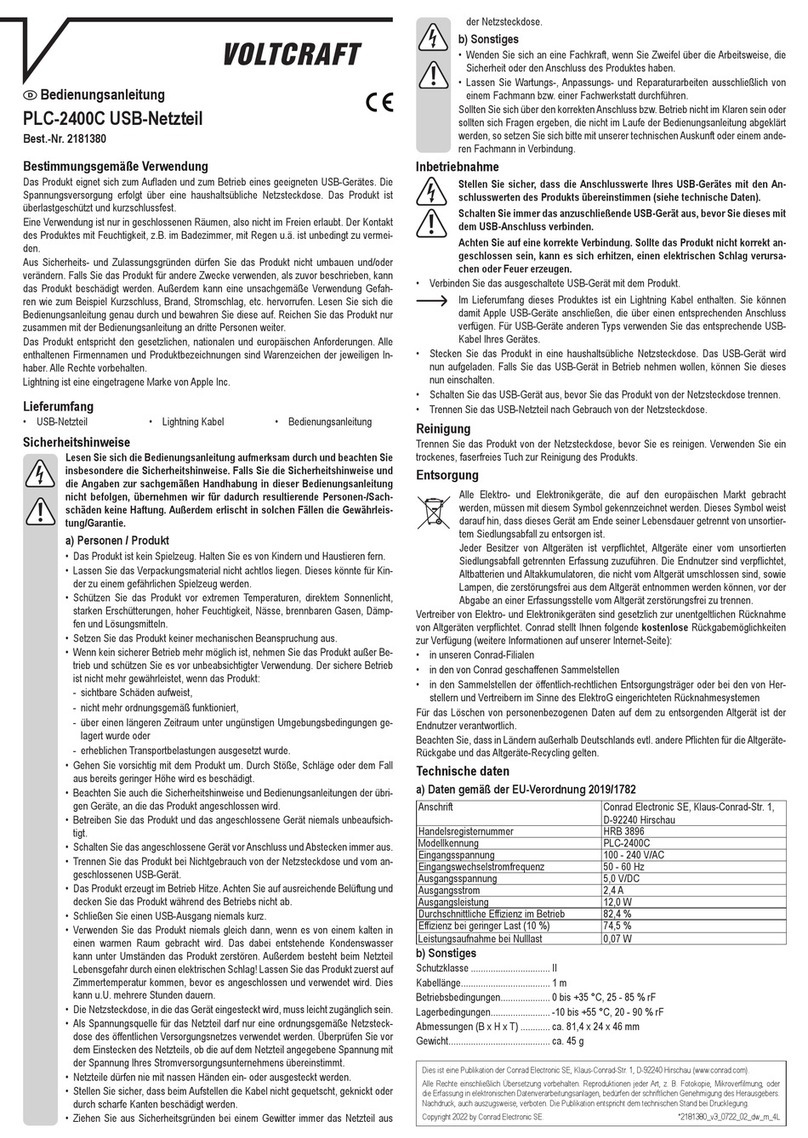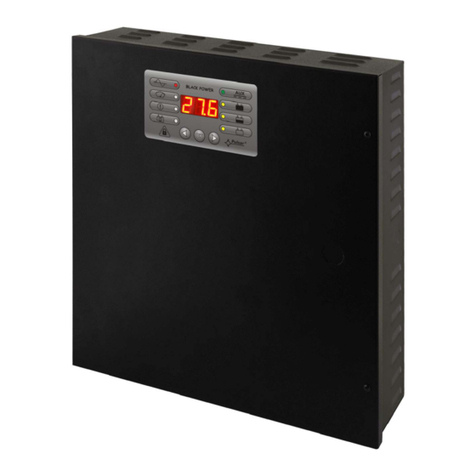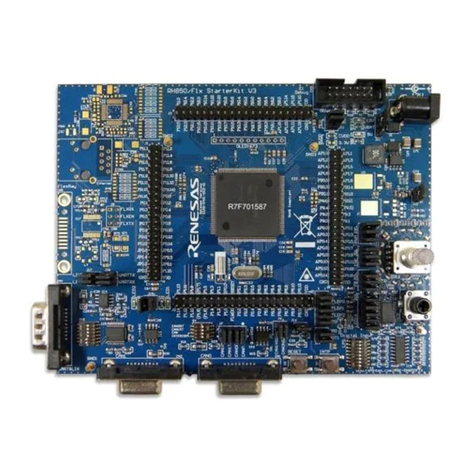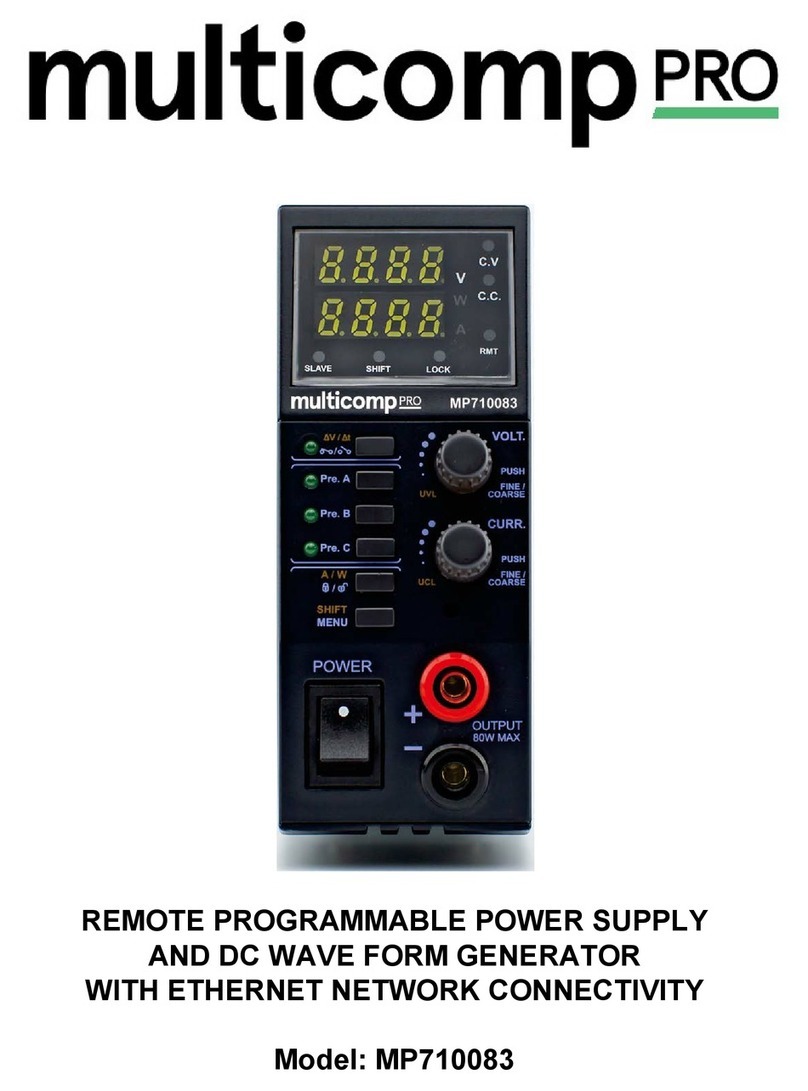Linear Technology DC1978A User manual

Looking for a discount?
Check out our current promotions!
This coversheet was created by Verical, a division of Arrow Electronics, Inc. (“Verical”). The attached document was created by the part supplier,
not Verical, and is provided strictly 'as is.' Verical, its subsidiaries, affiliates, employees, and agents make no representations or warranties
regarding the attached document and disclaim any liability for the consequences of relying on the information therein. All referenced brands,
product names, service names, and trademarks are the property of their respective owners.
00000005981LF-000
EOS Power
Buy Now
We have 45,000 LP502030-PCM-NTC-LD-A02554 - EEMB - Lithium Battery Rectangular 3.7V 250mAh Rechargeable in
stock now. Starting at $0.034. This EEMB part is fully warrantied and traceable.
1-855-837-4225
Give us a call
International: 1-555-555-5555 1-415-281-3866
1-415-281-3866
Arrow Electronics,
Verical Division
P.O. Box 740970
Los Angeles, CA 90074-0970
Arrow Electronics, Inc
9201 East Dry Creek Road
Centennial, CO 80112
DC1978A
ANALOG DEVICES
Buy Now

1
dc1978af
DEMO MANUAL DC1978A
DESCRIPTION
LTC2974 Quad
Digital Power Supply
Manager with EEPROM
The DC1978A is a demonstration system for the LTC
®
2974
quad I2C/SMBus/PMBus power supply monitor and con-
troller with EEPROM. The DC1978A demonstrates the
ability of the LTC2974 to monitor, supervise, sequence,
trim, margin and log faults for four power supplies. Each
power supply channel of the LTC2974 monitors current,
voltage and temperature. This demonstration system is
supported by the LTpowerPlay™ graphical user interface
(GUI)thatenablescompletecontrolofallLTC2974features.
The DC1978A consists of two circuit boards designed to
work as a pair, DC1809A and DC1810A. The DC1809A
contains all the circuitry needed to insert the LTC2974
into a power system and control four power supplies.
The DC1810A contains four power supplies, two LTC3860
DrMOS supplies and two LTM
®
4620 supplies, which are
configuredtobecontrolled by the LTC2974. Together,these
two boards form a sophisticated four-channel digitally
programmable power supply.
Together,theLTpowerPlay software andDC1978Ahardware
system create a powerful development environment for
designing and testing LTC2974 configuration settings.
These settings can be stored in the LTC2974 internal
EEPROM or in a file. This file can later be used to order
preprogrammed devices or to program devices in a pro-
duction environment. The LTpowerPlay software displays
all of the configuration settings and real time measure-
ments from the LTC2974. Telemetry allows easy access
and decoding of the fault log created by the LTC2974. The
LTC2974 on the DC1809A board comes preprogrammed
with the EEPROM values appropriate for the four power
supplies used on the DC1810A. Just plug and play!
Multiple DC1978A board sets can be cascaded together to
form a high channel count power supply (see Multiboard
Arrays). This cascaded configuration demonstrates
features of the LTC2974 which enable timing and fault
information to be shared across multiple LTC2974s allow-
ing for the formation of a single, coherent power supply
control system. This cascaded configuration is supported
L, LT, LTC, LTM, μModule, PolyPhase, Linear Technology and the Linear logo are registered
trademarks and LTpowerPlay is a trademark of Linear Technology Corporation. All other
trademarks are the property of their respective owners. Protected by U.S. Patents Including
7382303 and 7420359.
by the LTpowerPlay GUI and allows the user to configure
up to nine LTC2974s, thereby controlling up to 36 sepa-
rate power supplies. Larger arrays (>9) of LTC2974s are
supported through programmable I2C base address or
bus segmentation.
TheDC1809A/DC1810Aboardsare powered by an external
12V power supply. Communication with the LTpowerPlay
software is via the DC1613 USB to I2C/SMBus/PMBus
controller. The following is a checklist of items which can
be obtained from the LTC website or LTC Field Sales.
• USB to I2C/PMBus Controller (DC1613)
• LTpowerPlay Software
• Configuration File (.proj file) for the DC1978A
Design files for this circuit board are available at
http://www.linear.com/demo
LTC2974 Features
• I2C/SMBus Serial Interface
• PMBus Compliant Command Set
• Configuration EEPROM with CRC
• Black Box Fault Logging to Internal EEPROM
• Differential Input, 16-Bit ΔΣADC with Less Than
±0.25% of Total Unadjusted Error
• Four Voltage Servos Precisely Adjust Supply
Voltages Using 10-Bit DACs with Soft Connect
• MonitorsFour Output Voltages,Four Output Currents
and One Input Voltage
• Monitors Four External Temperature Sensors and
Internal Die Temperature
• 4-Channel Sequencer, Time Based or Tracking
• Programmable Watchdog Timer

2
dc1978af
DEMO MANUAL DC1978A
DESCRIPTION
• Four OV/UV VOUT and One VIN Supervisor
• Four Overcurrent/Undercurrent Supervisors
• Supports Multichannel Fault Management
• OperatesAutonomously without Additional Software
• Powered from 3.3V or 4.5V to 15V
• Available in 64-Lead 9mm × 9mm QFN
PERFORMANCE SUMMARY
PARAMETER CONDITIONS MIN TYP MAX UNITS
VPWR Supply Input Voltage Range 4.5 15 V
VDD33 Supply Input Voltage Range 3.13 3.47 V
ADC Total Unadjusted Error VIN_ADC ≥ 1V ±0.25 %
ADC Voltage Sensing Input Range Differential Voltage: VIN_ADC = (VSENSEP[n] – VSENSEM[n])
VSENSEM[n]
0
–0.1
6
0.1
V
V
ADC Voltage Sensing Resolution 122 μV/LSB
ADC Current Sense Input Range ISENSEP[n], ISENSEM[n]
Differential Voltage: VIN_ADC = (ISENSEP[n] – ISENSEM[n])
–0.1
–170
6
170
V
mV
ADC Current Sense Resolution RSENSE(IOUT_CAL_GAIN) = 1Ω
0mV ≤ |VIN_ADC| < 16mV
16mV ≤ |VIN_ADC| < 32mV
32mV ≤ |VIN_ADC| < 63.9mV
63.9mV ≤ |VIN_ADC| < 127.9mV
127.9mV ≤ |VIN_ADC|
15.265
31.25
62.5
125
250
μA/LSB
μA/LSB
μA/LSB
μA/LSB
μA/LSB
Trim DAC Resolution 10 Bits
Trim DAC Full Scale Output Voltage Buffer Gain Setting 0 (MFR_CONFIG(dac_gain) = 0)
Buffer Gain Setting 1 (MFR_CONFIG(dac_gain) = 1)
1.38
2.65
V
V
Temperature Sensor Resolution 0.136 °C/LSB
Voltage Supervisor Input Voltage Range Low Resolution, VIN_VS = (VSENSEP[n] – VSENSEM[n])
High Resolution, VIN_VS = (VSENSEP[n] – VSENSEM[n])
VSENSEM[n]
0
0
–0.1
6
3.8
0.1
V
V
V
Voltage Supervisor Sensing Resolution 0V to 3.8V Range
0V to 6V Range
4
8
mV/LSB
mV/LSB
Voltage Supervisor Total Unadjusted
Error
2V < VIN_VS < 6V, Low Resolution Mode
1.5V < VIN_VS < 3.8V, High Resolution Mode
0.8V < VIN_VS < 1.5V, High Resolution Mode
±1.25
±1.0
±1.5
%
%
%
Current Supervisor Input Range ISENSEP[n], ISENSEM[n] –0.1 6 V
Differential Voltage: VIN_CS = (ISENSEP[n] – ISENSEM[n])) –170 170 mV
Current Supervisor Resolution IOUT_xC_FAULT_LIMIT × IOUT_CAL_GAIN 400 μV/LSB
Current Supervisor Total Unadjusted
Error
50mV ≤ VIN_CS ≤ 170mV
VIN_CS < 50mV
±3
±1.5
%
mV
I2C Serial Clock Frequency 10 400 kHz
DC1978A Power Supply Specifications
POWER SUPPLY CHANNEL CH0 CH1 CH2 CH3
Controller LTC3860, VOUT1 LTC3860, VOUT2 LTM4620, VOUT1 LTM4620, VOUT2
Nominal Untrimmed Output Voltage 1.8V ± 2.1 % 1.5V ± 2.1 % 1.2V ± 2.1 % 1.0V ± 2.1 %
Rated Output Current 2A 2A 5A 5A
Output Trim Range (VDAC_FS = 1.38V) 13/–19 % 11 /–15% 16/–21 % 16/–21 %
Specifications valid over full operating temperature range.
DC1978A DEMO SYSTEM SPECIFICATIONS

3
dc1978af
DEMO MANUAL DC1978A
LTpowerPlay GUI SOFTWARE
LTpowerPlay is a powerful Windows based development
environmentthatsupportsLinearTechnologydigitalpower
ICs with EEPROM, including the LTC2974 and LTC2978
quad and octal PMBus power supply managers, and
the LTC3880 dual output PolyPhase
®
step-down DC/DC
controller with digital power system management. The
software supports a variety of different tasks. You can
use LTpowerPlay to evaluate Linear Technology ICs by
connecting to a demo board system. LTpowerPlay can
also be used in an offline mode (with no hardware pres-
ent) in order to build a multichip configuration file that
can be saved and reloaded at a later time. LTpowerPlay
provides unprecedented diagnostic and debug features. It
becomes a valuable diagnostic tool during board bring up
to program or tweak the power management scheme in
a system or to diagnose power issues when bringing up
rails. LTpowerPlay utilizes the DC1613A USB-to-SMBus
controller to communicate with one of many potential
targets, including the LTC2974’s DC1978A demo system
or a customer board. The software also provides an au-
tomatic update feature to keep the software current with
the latest set of device drivers and documentation. The
LTpowerPlay software can be downloaded from:
http://linear.com/ltpowerplay
To access technical support documents for LTC Digital
Power Products visit Help, View Online help on the
LTpowerPlay menu.
Figure 1. Interface of the LTpowerPlay GUI
DC1978a F01

4
dc1978af
DEMO MANUAL DC1978A
QUICK START PROCEDURE
Thefollowingproceduredescribeshowtosetup a DC1978A
demo system.
1. Download and install the LTpowerPlay GUI:
http://linear.com/ltpowerplay
2. Remove both boards from the ESD protective bags
and place them on a level surface. Connect the boards
together using the 50-pin edge connector. Be especially
careful not to misalign the connectors. Connect the
DC1613 I2C/SMBus/PMBus controller to the DC1809A
board.
3. Confirm that all jumpers and switches on DC1809A are
set to their defaults as follows:
a. Set both JP1 and JP2 (Address select ASEL0 and
ASEL1) to LOW to select I2C address 0x5C.
b. Set JP3 (WRITE PROTECT) to OFF to enable writing
to the LTC2974 EEPROM.
c. Set the control jumpers JP4 to JP7 to SW0 to SW3
position to connect the switches to the LTC2974
control pins.
d. Set all control switches SW0, SW1, SW2 and SW3
to HI.
4. Confirm that all jumpers and switches on DC1810A are
set to their defaults as follows.
a. Set JP1, JP2 and JP3 to SOFT-START to enable
independent startup of CH1, CH2 and CH3.
b. Set the preload switches SW1, SW2, SW3 and SW4
to ON.
5. Plug the USB to I2C/SMBus/PMBus Controller into a
USB port on your PC.
6. Connect a 12V power supply with > 0.5A capacity to
the VIN input of the DC1810A. The board should power
up and all power good outputs should be illuminated
green.
7. Launch the LTpowerPlay GUI.
a. The GUI should automatically indentify the LTC2974.
The system tree on the left hand side should look
like this:
Figure 2. Connecting DC1809A/DC1810A Boards and the DC1613 I2C/SMBus/PMBus Controller
DC1978a F02

5
dc1978af
DEMO MANUAL DC1978A
QUICK START PROCEDURE
b. A green message box shows for a few seconds in the
lower left hand corner, confirming that the LTC2974
is communicating:
9. You are now ready to view one of the LTC2974 demo
videos embedded in the LTpowerPlay GUI or experi-
ment with the part on your own. To view a video or
more LTC2974 information and application notes, visit
the LTpowerPlay online help website from the GUI as
shown here:
c. In the Toolbar, click the R icon to read the RAM from
the LTC2974. This reads the configuration from the
RAM of LTC2974 and loads it into the GUI.
d. Save the demo board configuration to a (*.proj) file.
Clickthe Save iconand save thefile. Name itwhatever
you want.
8. The control switches SW0 to SW3 are configured to
control channels CH0 to CH3. Slide the switches to HI/
GND to enable/disable the individual channels.
LOADING A LTC2974 CONFIGURATION (*.proj) FILE
WITH THE GUI
1. In the upper left hand corner of the GUI, File > Open >
browse to your *.proj file. This will load the file into
the GUI.
2. Click on the arrow. This loads the configura-
tion into LTC2974 RAM.
3. To store the configuration in EEPROM, click on the
STORE button. It is the button on the left below.

6
dc1978af
DEMO MANUAL DC1978A
DC1978A DETAILS TOP SIDE
Figure 3. DC1978A Top Details
DC1978a F03

7
dc1978af
DEMO MANUAL DC1978A
COMMON DEMO BOARD OPERATIONS
SELECTING I2C ADDRESS
The I2C/SMBus address of the LTC2974 equals the base
address + N, where N is a number from 0 to 8. N can be
configured by setting the ASEL0 and ASEL1 pins to VDD33,
GND or FLOAT. See Table 3. Using one base address and
the nine values of N, nine LTC2974s can be connected
together to control thirty six outputs. The base address
is stored in the MFR_I2C_BASE_ADDRESS register. The
base address can be written to any value, but generally
should not be changed unless the desired range of ad-
dressesoverlapexistingaddresses.Watchthattheaddress
range does not overlap with other I2C/SMBus device or
global addresses, including I2C/SMBus multiplexers and
bus buffers.
RESET THE LTC2974
To reset the LTC2974 and reload the EEPROM contents
into operating memory (RAM), press SW4 on DC1809A.
Table 3. Device Address Lookup Table
ADDRESS
DESCRIPTION
HEX DEVICE ADDRESS BINARY DEVICE ADDRESS BITS ADDRESS PINS
7-Bit 8-Bit 6 5 4 3 2 1 0 R/W ASEL1 ASEL0
ALERT RESPONSE 0C 19 00011001 X X
GLOBAL 5B B6 10110110 X X
N=0 5C* B8 10111000 L L
N=1 5D BA 10111010 L NC
N=2 5E BC 10111100 L H
N=3 5F BE 10111110 NC L
N=4 60 C0 11000000 NC NC
N=5 61 C2 11000010 NC H
N=6 62 C4 11000100 H L
N=7 63 C6 11000110 H NC
N=8 64 C8 11001000 H H
H = Tie to VDD33, NC = No Connect = Open or Float, L = Tie to GND, X = Don’t Care
* MFR_I2C_BASE_ADDRESS = 7-Bit 0x5C (Factory Default)
DC1978A LEDS
The red LEDs on ALERTB, FAULTB0, FAULTB1 and AUX-
FAULTB (D3, D4, D5, D2) indicate a fault has occurred.
The green LED (D6) next to them is the LTC2974 PWRGD
signal. Each individual channel on DC1810A also has
its own green PWR GOOD LED (PG0, PG1, PG2, PG3).
When the USB to I2C/SMBus/PMBus controller power or
external power is applied, the green LED D1 will illuminate,
indicating that the LTC2974 is powered.
FAULTING AN OUTPUT
The outputs of the power supplies CH0 to CH3 may be
shorted indefinitely. This is a good way to induce UV faults.
Use a jumper wire or a coin to short any output.

8
dc1978af
DEMO MANUAL DC1978A
FAULT SHARING SETUP IN THE GUI
Use the fault sharing setup tool to configure the fault
sharing in the GUI. Before doing so, view the fault sharing
demo in the GUI. Go to Tools > Fault Sharing Diagram.
Also, read the section on fault sharing in the data sheet.
“WHY AM I OFF?” TOOL
Use the “Why am I Off?” tool in the LTpowerPlay GUI to
diagnose the reason a power supply channel is turned off.
The tool can be located in the top right corner of the GUI,
next to the Register Information tab.
TRACKING BASED SEQUENCING
The LTC2974 supports tracking power supplies that are
equipped with a tracking pin and configured for tracking.
A tracking power supply uses a secondary feedback ter-
minal (TRACK) to allow its output voltage to be scaled to
an external master voltage. Typically, the external voltage
is generated by the supply with the highest voltage in the
system, which is fed to the slave track pins (see Figure 6).
Any supplies that track a master supply must be enabled
before the master supply comes up and disabled after the
master supply comes down. Enabling the slave supplies
COMMON DEMO BOARD OPERATIONS
Figure 4. Fault Sharing Utility in LTpowerPlay GUI
Figure 5. “Why am I Off?” tool in the LTpowerPlay GUI
DC1978a F04
DC1978a F05

9
dc1978af
DEMO MANUAL DC1978A
when the master is down requires supervisors monitoring
theslaves to disable UV detection.Slave UC detection must
also be disabled when the slaves are tracking the master
down to prevent false UC events. All channels configured
for tracking must track off together in response to a fault
on any channel or any other condition that can bring one
or more of the channels down. Prematurely disabling a
slave channel via its run pin may cause that channel to
shut down out of sequence. The LTC2974 supports the
following tracking features:
• Track channels on and off without issuing false UV/
UC events when the slave channels are tracking up or
down.
• Track all channels down in response to a fault from a
slave or master.
• Track all channels down when VIN_SNS drops below
VIN_OFF, share clock is held low or RESTORE_USER_
ALL is issued.
• Ability to reconfigure selected channels that are part of
a tracking group to sequence up after the group has
tracked up or sequence down before the group has
tracked down.
Todemonstrate the tracking features ofLTC2974, DC1810A
has three jumpers (JP1, JP2 and JP3) that can be set to
connect resistive dividers from the 1.8V master supply
(CH0) to the TRACK pins of channels 1 to 3.
The required timing settings and diagrams in order to
enable tracking with LTC2974 are listed in the data sheet,
and a brief summary is shown below:
Master channel 0
• TON_DELAY = Ton_delay_master
• TON_RISE = Ton_rise_master
• TOFF_DELAY = Toff_delay_master
• Mfr_track_en_chan0 = 0
COMMON DEMO BOARD OPERATIONS
Figure 6. LTC2974 Configured to Control, Supervise and Monitor Power Supplies Equipped with Tracking Pin
VOUTP
RUN
VOUTM
VSENSEP0
VSENSEM0
TRACK
FAULTB0FAULTB0
LTC2974
CONTROL0
VOUT_EN0
CONTROL0
DC/DC LOAD
VOUTP
RUN
VOUTM
VSENSEP1
VSENSEM1
TRACK
VOUT_EN1
DC/DC LOAD
VOUTP
RUN
VOUTM
VSENSEP2
VSENSEM2
TRACK
VOUT_EN2
DC/DC LOAD
VOUTP
RUN
VOUTM
VSENSEP3
VSENSEM3
TRACK
VFB
VDAC0
VFB
VDAC1
VDAC3
VFB
VDAC2
VFB
VOUT_EN3
VSENSEP0
VSENSEP1
VSENSEP2
VSENSEM0
VSENSEM1
VSENSEM3
VSENSEM2
VSENSEP3
DC/DC LOAD
DC1978a F06
R2_3
R1_3
R2_2
R1_2
R2_1
R1_1
PWRGD

10
dc1978af
DEMO MANUAL DC1978A
Slave channel n
• TON_DELAY = Ton_delay_slave
• TON_RISE = Ton_delay_master + Ton_rise_slave
• TOFF_DELAY = Toff_delay_master + T_off_delay_slave
• Mfr_track_en_chan0 = 1
Where:
Ton_delay_master – Ton_delay_slave > RUN to TRACK
setup time
Toff_delay_slave > time for master supply to fall.
PROCEDURE TO DEMONSTRATE TRACKING WITH
DC1978A
1. Start with the default LTC2974 EEPROM and jumper
settings for DC1978A. Set the jumpers JP1, JP2 and
JP3 to TRACK CH0 position. This connects the TRACK
pins of the slave supply channels to the output voltage
of the master channel through resistive dividers (see
Figure 6).
2. Set DC1809A jumper JP4 to SW0 position to propagate
theCONTROL0switchtotheCONTROL0pinof LTC2974.
3. Set the preload (100mA) of CH0 (SW1 to ON) and the
preloads of the slave channels CH1 to CH3 to OFF (SW2
to SW4 to OFF). The absence of load for the slave chan-
nels makes improper sequencing down behavior more
obvious.
4. Configure all power supplies to respond to CONTROL0,
by setting the appropriate bit in the paged MFR_CONFIG
register. In this case U0:0, U0:1, U0:2 and U0:3 are all
controlled by CONTROL0.
COMMON DEMO BOARD OPERATIONS

11
dc1978af
DEMO MANUAL DC1978A
5. Set the TON_DELAY of all slaves (CH1, CH2 and CH3)
to 0ms and the TON_DELAY for the master channel to
20ms.
COMMON DEMO BOARD OPERATIONS
6. Set the TOFF_DELAY of all slaves (CH1, CH2 and CH3)
to 20ms and the TOFF_DELAY for the master channel
to 0ms.
7. Set the TON_RISE of all slaves (CH1, CH2 and CH3)
to 30ms and the TON_RISE for the master channel to
10ms.

12
dc1978af
DEMO MANUAL DC1978A
COMMON DEMO BOARD OPERATIONS
Figure 7. Tracking Supplies Up with DC1978A Figure 8. Tracking Supplies Down with DC1978A
8. Set the track_en_chan1, track_en_chan2 and track_
en_chan3 bits in MFR_CONFIG3 to 1.
9. Toggle the CONTROL0 switch and observe the synchro-
nized tracking behavior of the power supplies.
DC1978a F08
DC1978a F07

13
dc1978af
DEMO MANUAL DC1978A
COMMON DEMO BOARD OPERATIONS
CASCADE SEQUENCING
Cascade sequence ON allows a master power supply to
sequence ON a series of slave supplies by connecting
each power supply’s power good output to the control
pin of the next power supply in the chain. Please note
that the power good signal is that of the power supply
and not derived from the LTC2974’s internal power good
processing. Power good based cascade sequence OFF is
not supported, OFF sequencing must be managed using
immediate or time based sequence OFF. See also Tracking
Based Sequencing.
Cascade sequence ON is illustrated in Figure 9. For each
slave channel Mfr_config_cascade_on bit is asserted
Figure 9. LTC2974 Configured to Cascade Sequence ON and Time Base Sequence OFF
high and the associated control input is connected to the
power good output of the previous power supply. In this
configuration each slave channel’s startup is delayed until
the previous supply has powered up.
Cascade sequence OFF is not directly supported. Options
for reversing the sequence when turning the supplies off
include:
• Using the OPERATION command to turn off all the
channels with an appropriate off delay.
• Using the FAULT pin to bring all the channels down im-
mediately or in sequence with an appropriate off delay.
VOUTP
RUN
VOUTM
VSENSEP0
VSENSEM0
POWERGOOD0
FAULTB0FAULTB0
LTC2974
SLAVES
MASTER
CONTROL0
RECOMMENDED CONNECTION
WHEN HARDWARE ON/OFF
CONTROL IS REQUIRED
VOUT_EN0
CONTROL1
CONTROL0
DC/DC LOAD
VOUTP
RUN
VOUTM
VSENSEP1
VSENSEM1
POWERGOOD1
VOUT_EN1
CONTROL2
DC/DC LOAD
VOUTP
RUN
VOUTM
VSENSEP2
VSENSEM2
POWERGOOD2
VOUT_EN2
CONTROL3
DC/DC LOAD
TO NEXT CONTROL PIN
VOUTP
RUN
VOUTM
VSENSEP3
VSENSEM3
POWERGOOD3
VOUT_EN3
DC/DC LOAD
DC1978a F09

14
dc1978af
DEMO MANUAL DC1978A
COMMON DEMO BOARD OPERATIONS
PROCEDURE TO DEMONSTRATE CASCADE
SEQUENCING WITH DC1978A
1. Start with the default LTC2974 EEPROM and jumper
settings for DC1978A. Set the DC1809A power good
cascading jumpers JP4, JP5, JP6 and JP7 to SW0,
PG_0, PG_1, PG_2 positions. This connects the power
good and control pins as shown in Figure 9.
2. Enable all output supply preloads on DC1810A by slid-
ing the DC1810A switches SW1, SW2, SW3 and SW4
to ON position.
3. Set the TON_DELAY of all channels to 0ms
4. SettheTOFF_DELAY for the inverse shutdownsequence.

15
dc1978af
DEMO MANUAL DC1978A
COMMON DEMO BOARD OPERATIONS
5. Set the cascade_on bit in MFR_CONFIG register for
CH1, CH2 and CH3. The master channel has this bit
cleared.
6. Use Group Operation On to power up all supplies

16
dc1978af
DEMO MANUAL DC1978A
Figure 10. Cascade Sequencing Up with DC1978A Figure 11. Time Based Sequencing Down with DC1978A
COMMON DEMO BOARD OPERATIONS
7. Use Group Operation “Sequence Off” to power down
all supplies
8. ThepowersuppliescascadeON/OFFasshown in Figures
10 and 11 below.
DC1978a F10 DC1978a F11

17
dc1978af
DEMO MANUAL DC1978A
SETUP PROCEDURE FOR MULTIBOARD ARRAYS
Figure 12. Array of Multiple DC1978A Demo Boards
Multiple DC1978As can be combined to control up to 36
independent power supplies. This demonstrates the co-
ordinated fault responses and accurate time base shared
across multiple LTC2974 chips.
Procedure:
1. Stack the boards together by plugging J1 of the second
DC1809A board into J3 of the first DC1809A board.
2. Connect the 12V VIN across the boards using the ba-
nana cables as shown in Figure 12 below. Preserve the
correct polarity (connect VIN to VIN and GND to GND).
3. The USB to I2C/SMBus/PMBus controller may be
pluggedintoeitherboard. Ifboth LTC2974s do not show
up in the GUI, click the hourglass icon to enumerate
the I2C bus and find the addresses of the parts. Make
sure to set different addresses for each LTC2974.
4. The addresses of the LTC2974 are set by the jumpers
JP1 and JP2 on DC1809A and the settings have to be
unique for each board in the array.
5. Since the individual control lines are connected across
the boards (CONTRL0 is a common bus across all
boards in the array, as are CONTROL1 CONTROL2
and CONTROL3), make sure that all control pins on all
DC1809A boards are set to the selected active state.
6. Relaunch LTpowerPlay. After launching, LTpowerPay
will enumerate the entire board array and build a rep-
resentative system tree and read all hardware settings
into the GUI.

18
dc1978af
DEMO MANUAL DC1978A
DC1809A DETAILS TOP
Table 4. DC1809A Default Jumper and Switch Configuration (Default Position Shown in Grey in the Figure Above)
REFERENCE
DESIGNATOR SIGNAL NAME USAGE DEFAULT
JP1, JP2 ASEL0, ASEL1 Set the address offset of LTC2974 LOW, LOW
JP3 WRITE PROTECT Write protect the LTC2974 EEPROM
memory
OFF
JP4, JP5, JP6, JP7 CONTROL0, CONTROL1,
CONTROL2, CONTROL3
Implement cascade sequencing by
connecting power good signals to the
control pins, or connect the control pins
directly to the SW0 to SW3 switches
SW0, SW1, SW2,
SW3
SW0, SW1, SW2,
SW3
CONTROL0, CONTROL1
CONTROL2, CONTROL3
Switches that can be routed to the
individual CONTROL input pins of
LTC2974
HI, HI, HI, HI

19
dc1978af
DEMO MANUAL DC1978A
DC1809A DETAILS BOTTOM
Table of contents
Other Linear Technology Power Supply manuals
Popular Power Supply manuals by other brands
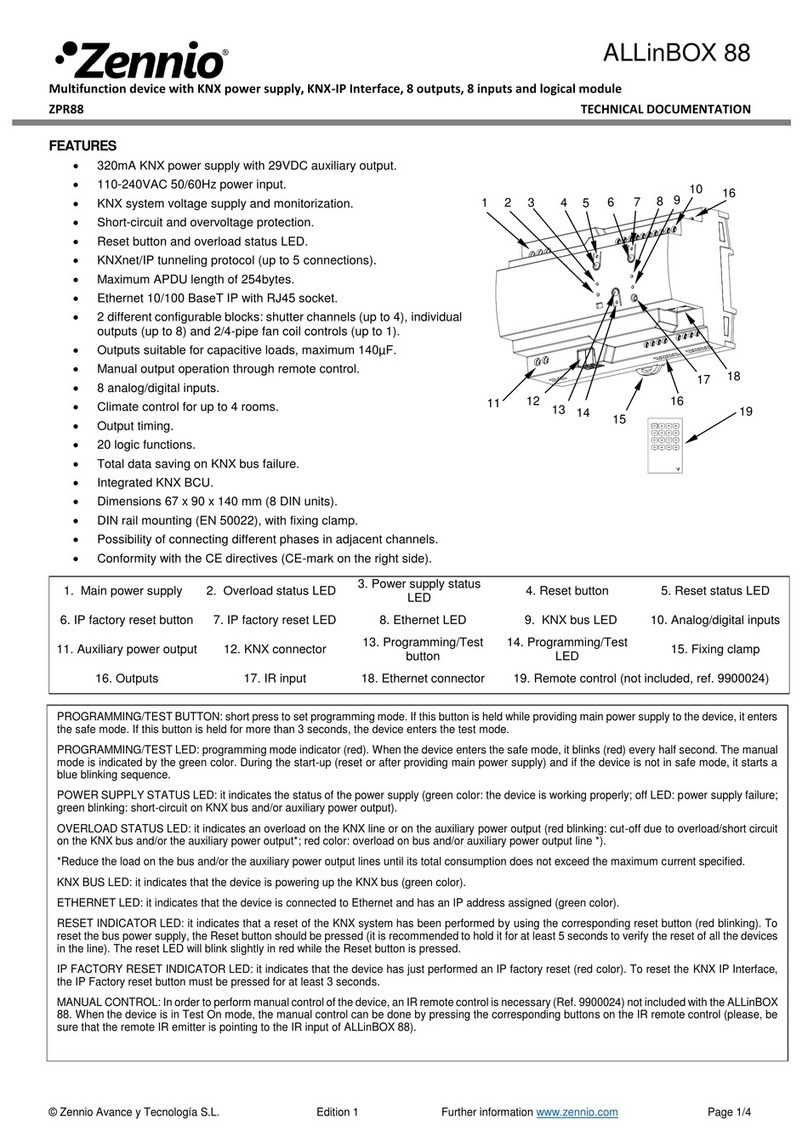
Zennio
Zennio ALLinBOX 88 Technical documentation
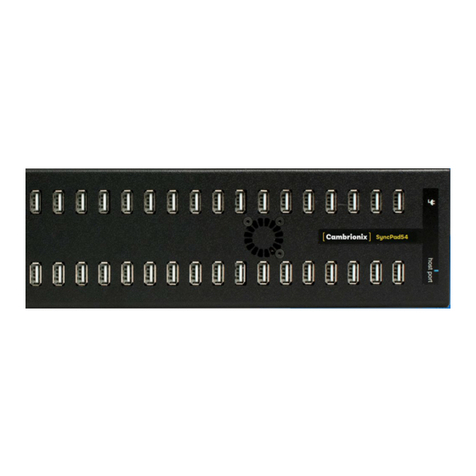
CAMBRIONIX
CAMBRIONIX SyncPad54 user manual
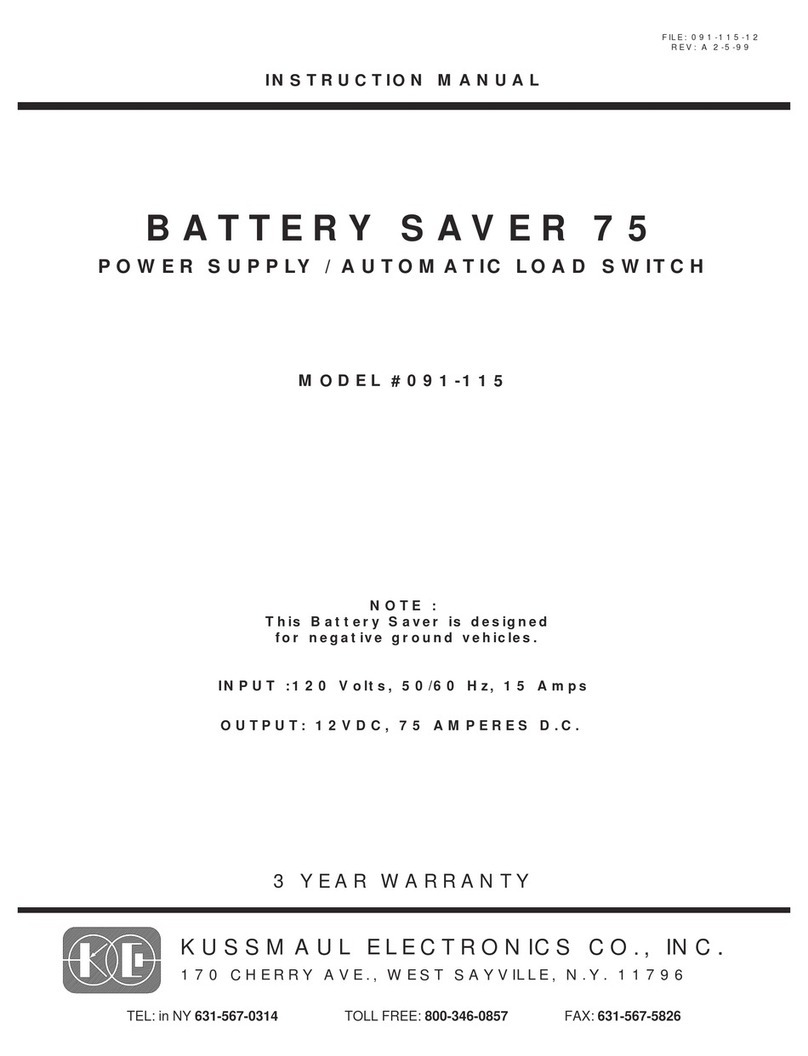
KUSSMAUL
KUSSMAUL 091-115 instruction manual
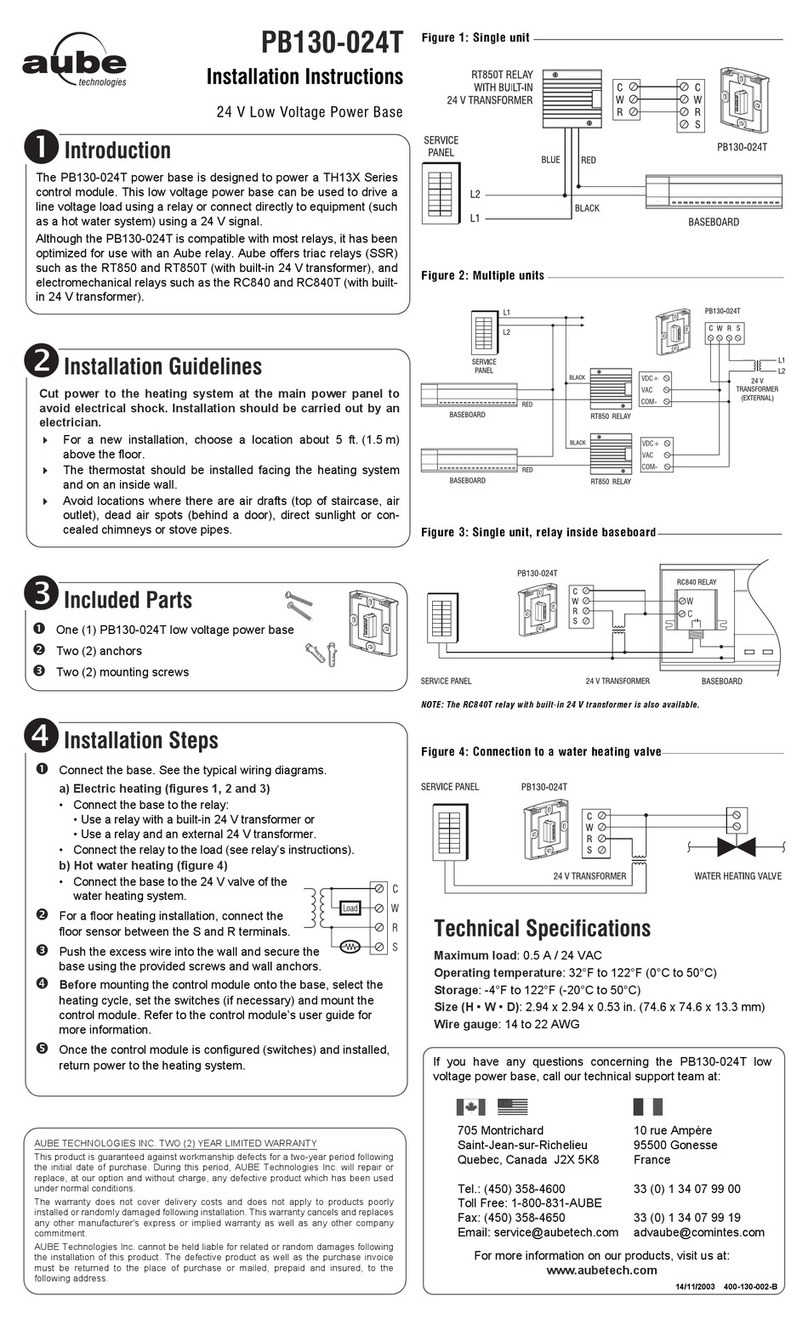
Aube Technologies
Aube Technologies Power Base PB1 30-024T installation instructions

SLAT
SLAT AES 28V/8A operating instructions
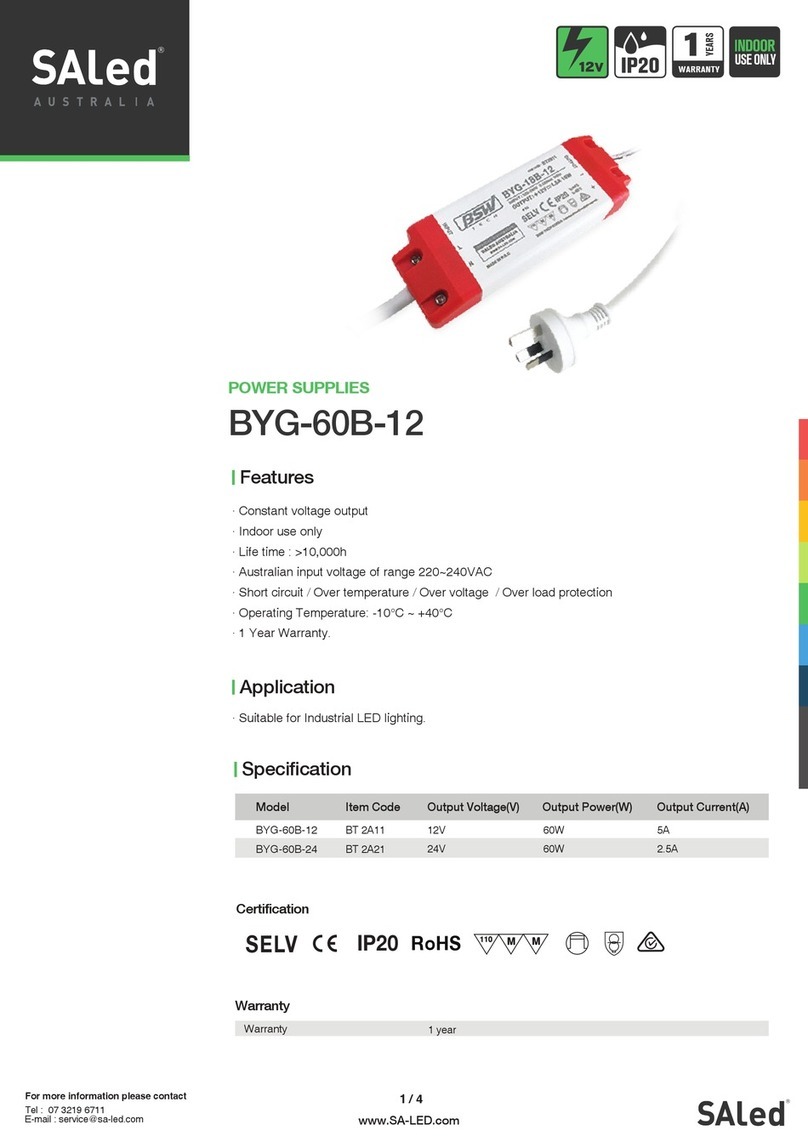
SAled Australia
SAled Australia BYG-60B-12 manual
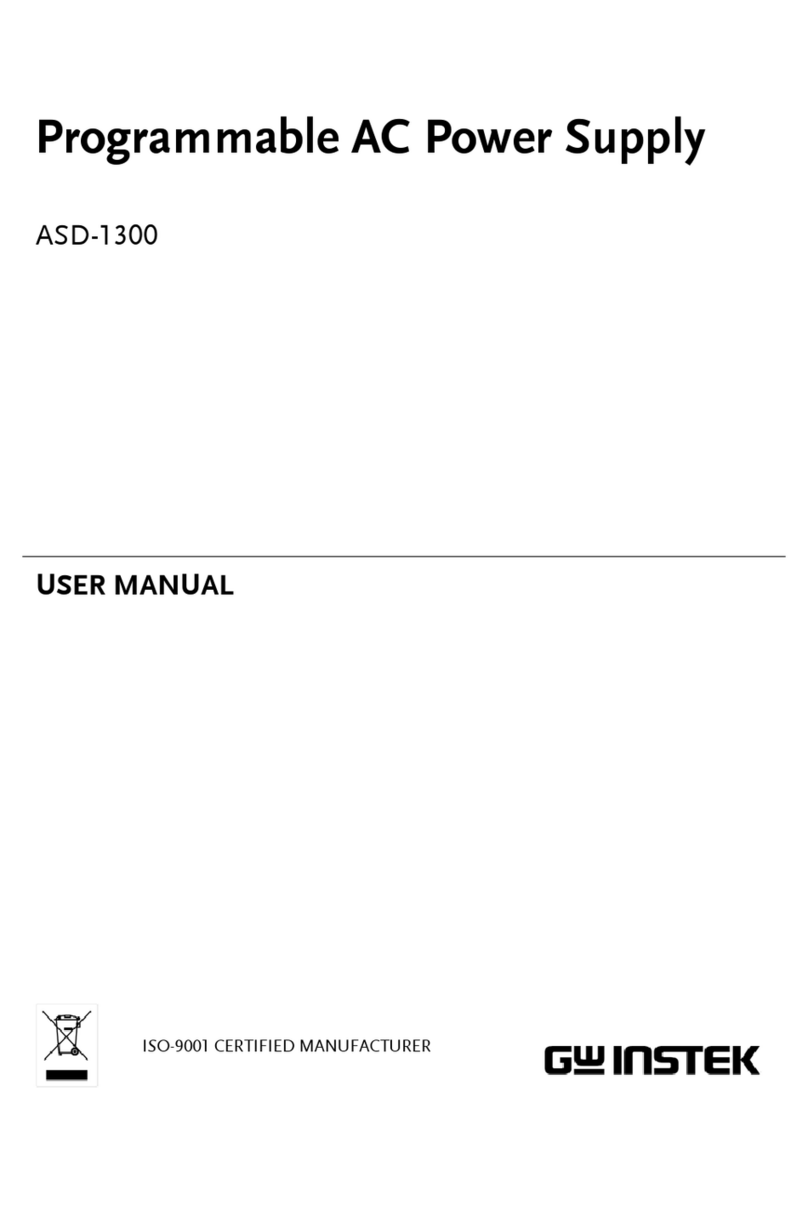
GW Instek
GW Instek ASD Series user manual
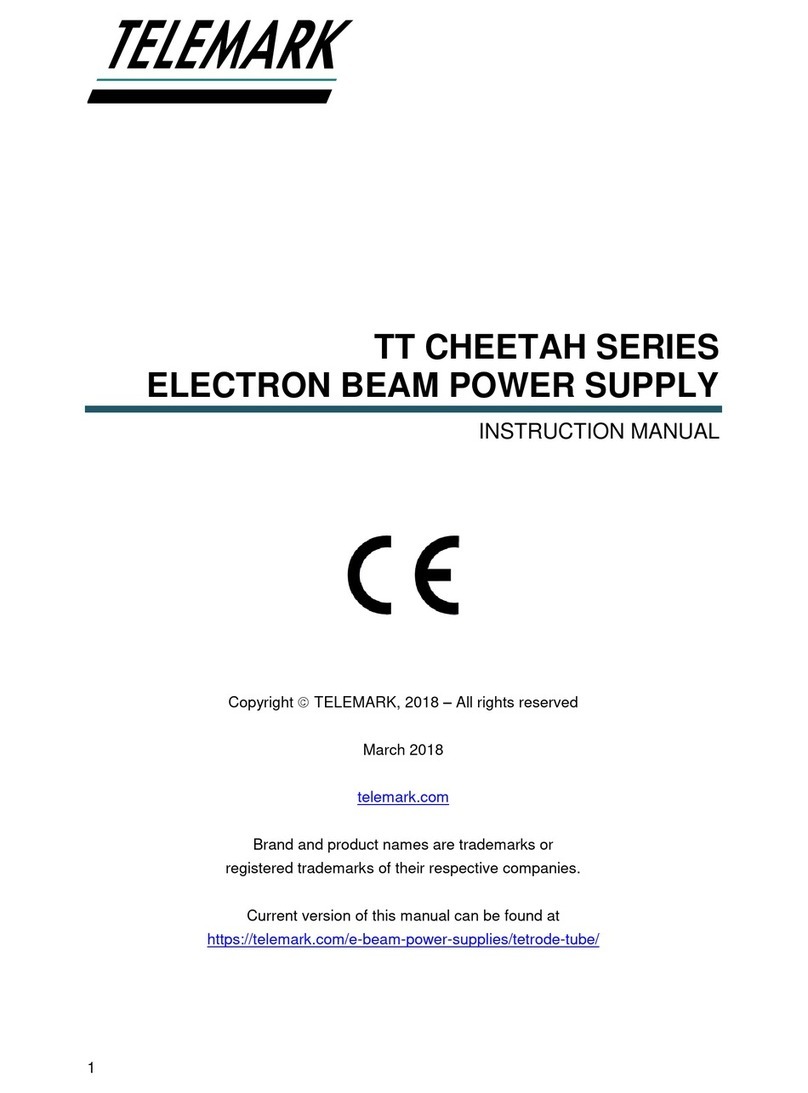
Telemark
Telemark TT CHEETAH Series instruction manual

Husqvarna
Husqvarna PP 480 HF Operator's manual

Ruckus Wireless
Ruckus Wireless SmartZone 300 Quick setup guide

Siemens
Siemens SITOP PSU8600 manual
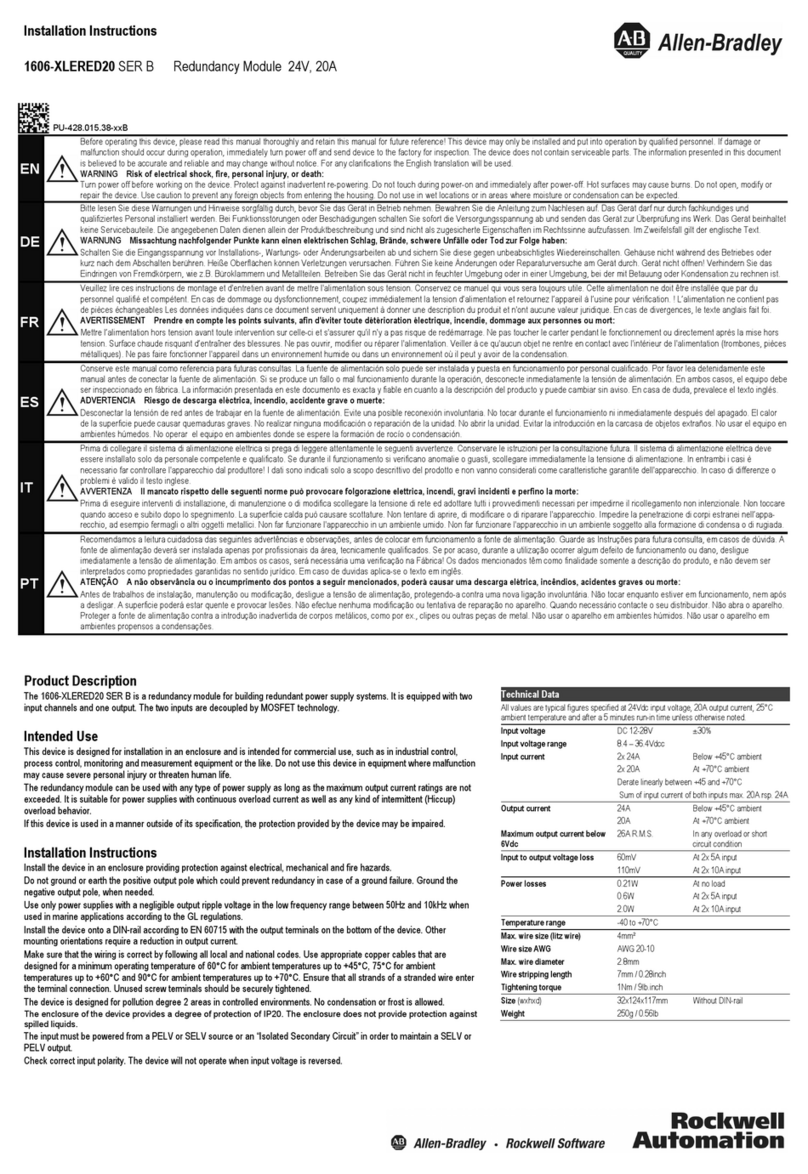
Rockwell Automation
Rockwell Automation Allen-Bradley 1606-XLERED20 installation instructions
